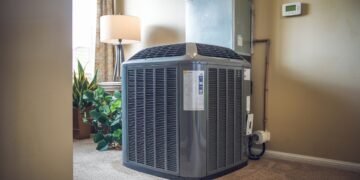Whether it’s to relieve muscle aches, soothe cramps, or provide warmth on a chilly day, heating pads have become a common household item. However, not all heating pads are created equal. Two of the most prevalent types are infrared and electric heating pads. While both can be effective, they work in different ways and offer distinctive benefits. This article will delve into the technologies behind infrared and electric heating pads and compare their applications and advantages.
Understanding Infrared Heating Pads
Infrared heating pads utilize far-infrared (FIR) technology. Far-infrared is a type of energy on the infrared spectrum that is absorbed directly by our bodies. Here are some key features of infrared heating pads:
- Deep Penetration: Infrared rays penetrate deep into your body, reaching muscle tissue and even bone. This allows for a thorough, intensive heating experience that can relieve pain more effectively than surface heating.
- Safe and Natural: FIR heat is a type of energy that’s naturally produced by the sun, minus the harmful UV radiation. It’s entirely safe for the body and doesn’t carry the risk of burns that conventional heating pads might.
- Efficient and Economical: Infrared heating pads heat the body directly, not the air around it. As a result, they use energy more efficiently and can stay warm for longer periods.
Applications of Infrared Heating Pads
Infrared heating pads can provide a range of therapeutic benefits:
- Pain Relief: By increasing circulation and oxygen flow to inflamed areas, infrared heating pads can relieve muscle pain, joint pain, and arthritis symptoms.
- Detoxification: FIR heat can promote sweat production, helping the body to rid itself of toxins.
- Improved Circulation: The deep penetration of FIR heat can boost blood flow, enhancing oxygen and nutrient delivery to muscle tissues.
Understanding Electric Heating Pads
Electric heating pads work by running an electric current through a resistive wire, which produces heat. This heat is then transferred to the surface of the pad and, eventually, to the body. Key features of electric heating pads include:
- Quick Heat: Electric heating pads heat up rapidly, providing instant comfort and relief.
- Adjustable Temperature: Most electric pads come with adjustable heat settings, allowing for customized heat intensity.
- Ease of Use: Electric heating pads are typically simple to operate, with a plug-and-play design that’s user-friendly.
Applications of Electric Heating Pads
Electric heating pads can be used for various purposes:
- Pain Relief: By warming the surface of the body, they can soothe minor aches and pains.
- Comfort: Electric heating pads can provide a sense of warmth and comfort, especially during colder weather.
- Relief from Menstrual Cramps: The warmth from an electric heating pad can alleviate menstrual pain and discomfort.
Comparing Infrared and Electric Heating Pads
Comparing infrared and electric heating pads, such as those produced by Healthyline and Sunbeam respectively, highlights several key differences. Healthyline’s infrared heating pads penetrate deep into the body, providing effective relief for muscle pain, improving circulation, and even promoting detoxification. In contrast, Sunbeam’s electric heating pads offer surface-level heat that soothes minor aches, provides a comforting warmth, and helps alleviate menstrual cramps.
While Healthyline’s infrared pads are generally more expensive due to their advanced technology, they are highly energy-efficient and carry a lower risk of burns. Sunbeam’s electric pads, on the other hand, are known for their quick heat-up time, adjustable temperature settings, and ease of use. This Healthyline and Sunbeam heating pads comparison should provide you with a clearer understanding of the respective benefits of infrared and electric technologies.
While both types of heating pads can provide relief and comfort, they have distinctive differences. Here’s a comparison using various parameters:
- Depth of Heat Penetration: Infrared heating pads penetrate deeply into the body, providing more effective relief for deep-seated pain. In contrast, electric heating pads mainly warm the skin and superficial muscles.
- Risk of Burns: Electric heating pads can potentially cause burns if used incorrectly or for too long due to their surface heat. On the other hand, infrared heating pads, with their lower, more even heat, carry a lower risk of burns.
- Energy Efficiency: Infrared heating pads tend to be more energy-efficient because they heat the body directly rather than the surrounding air.
- Price: Generally, infrared heating pads are more expensive than electric ones due to their advanced technology.
Conclusion
Infrared and electric heating pads both have their advantages and specific applications. Your choice between the two will depend on your individual needs, whether it be deep pain relief, rapid heating, or the ability to adjust heat intensity. Whichever type you choose, always follow the manufacturer’s safety instructions to ensure a safe and beneficial experience.
Recommended Posts:















